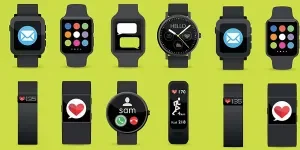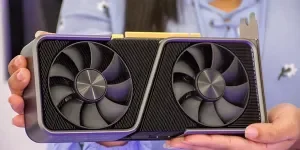In the fast-paced tech landscape, digital voice recorders are vital for professionals across industries. These devices capture high-quality audio for meetings, interviews, lectures, and training sessions with unmatched reliability. Equipped with superior sound clarity, extended battery life, and robust storage, digital voice recorders accurately preserve essential information, enhancing workflow and productivity. Understanding these tools is crucial for optimizing their utility in any professional toolkit.
Table of Contents
1. Exploring the spectrum of digital voice recorders
2. Insights into the 2024 recorder market
3. Decoding selection criteria for superior sound
4. Spotlight on 2024’s premier digital voice recorders
Exploring the spectrum of digital voice recorders
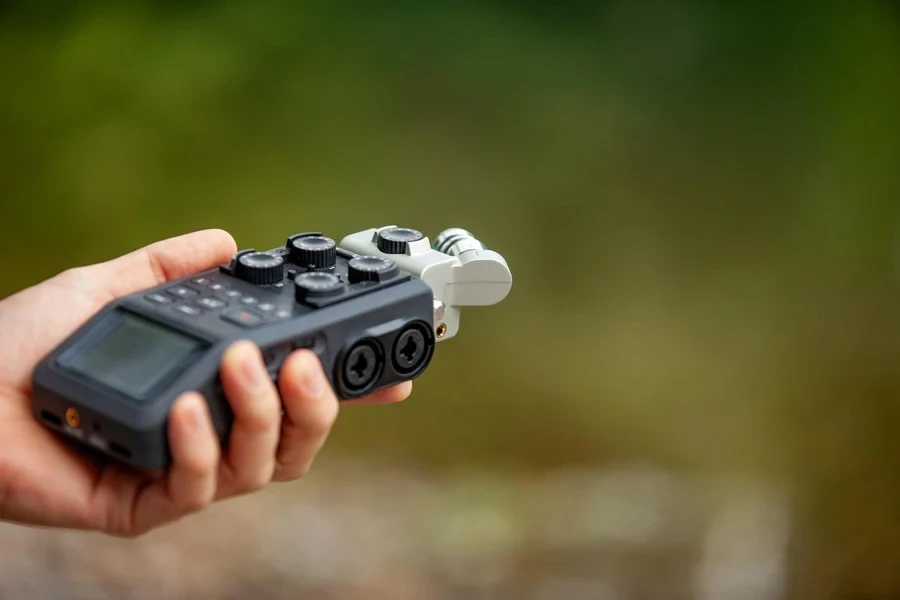
Unveiling recorder types: Digital voice recorders have evolved into an indispensable tool in many professional realms, characterized by an array of designs tailored to specific needs and environments. From compact, handheld devices perfect for on-the-go recording to sophisticated wireless systems that offer seamless audio transfers, the diversity in recorder types caters to a broad spectrum of professional activities. Handheld models remain popular for their portability and ease of use, making them ideal for capturing audio in fieldwork, interviews, or spontaneous meetings. On the other hand, wireless recorders provide advanced connectivity options, such as Bluetooth and USB interfaces, which facilitate the immediate transfer of files to computers or cloud storage, enhancing efficiency in environments where time and quick data access are of the essence.
Practical uses across fields: The practical applications of digital voice recorders span across various sectors, each utilizing the technology to foster accuracy and productivity. In journalism, these devices are crucial for conducting interviews where every word must be captured clearly. Legal professionals rely on them to record depositions and meetings, where precision and reliability in playback are non-negotiable. The healthcare sector uses recorders to document patient consultations and staff meetings, ensuring details are not lost and facilitating better patient care. In academia, both educators and students find digital recorders effective for capturing lectures and discussions, greatly aiding in the review and study process. Each application underscores the recorder’s role in streamlining tasks and ensuring that vital information is securely and efficiently documented.
The recent market analysis shows a continued rise in the adoption of digital voice recorders, driven by ongoing advancements in audio technology. These innovations include enhanced noise cancellation features, longer battery life, and expanded memory capacities, which are pivotal in meeting the growing demands for high-quality, reliable recording solutions. As sectors such as education, law enforcement, and media continue to recognize the benefits of digital recording, the market is expected to maintain a robust growth trajectory, emphasizing the recorder’s evolving role as a fundamental component in professional toolkits.
Insights into the 2024 recorder market

Innovation at the forefront: Experts currently value the digital voice recorder market at US$ 1,894.94 million, and they expect it to reach US $4,949.56 million by 2030. They estimate this boost will happen at a 17.35% compound annual growth rate (CAGR) from 2023 to 2030. The digital voice recorder market in 2024 is marked by a series of groundbreaking technological advancements that cater to a variety of professional needs. These enhancements not only include superior audio quality and increased memory capacities but also encompass innovations like sophisticated noise cancellation and extended battery life. Such features are becoming standard as the industry responds to the high demands of sectors that rely heavily on audio precision and versatility.
As technology progresses, digital voice recorders are also seeing the integration of smarter, more connected features. Wireless connectivity through Bluetooth and seamless USB transfers are now more refined, offering professionals the flexibility to manage recordings easily and efficiently. The incorporation of cloud-based storage solutions is another significant trend, enabling users to access and share files from anywhere, which is particularly beneficial for industries that operate in dynamic settings or require collaborative access to recorded data.
Analyzing consumer pulse: Understanding the evolving preferences of users in the digital voice recorder market is crucial for predicting future trends and market demands. There is a growing inclination towards devices that are not only functional but also portable and user-friendly, aligning with the needs of professionals who require recording solutions on the move. This shift is particularly evident in sectors like journalism, where the ability to quickly and reliably capture high-quality audio can make a significant difference in fieldwork.
The demand for digital voice recorders that offer a combination of high performance, durability, and ease of use is influencing how manufacturers develop their next generation of products. Additionally, the market sees a preference for models that can perform well in varied acoustic environments, from quiet offices to noisy outdoor locations, without compromising on sound quality.
These consumer insights indicate a robust growth trajectory for the digital voice recorder market, driven by continuous innovations and the adaptability of these devices to meet specific professional requirements. The focus remains on enhancing user experience and functionality, ensuring that digital voice recorders remain indispensable tools in the professional toolkit.
Decoding selection criteria for superior sound

Prioritizing audio excellence: When selecting a digital voice recorder, the quality of audio capture is the foremost consideration. Modern devices offer a range of microphone types tailored to different recording environments. For instance, dynamic microphones are optimal for close-range dictation, capturing sound with minimal background noise. In contrast, stereo microphones, equipped in many leading models, provide a rich, multi-directional audio capture ideal for detailed interviews or ambient soundscapes.
Further enhancing audio quality, top recorders feature adjustable settings that fine-tune recording parameters based on the acoustic environment. For example, models with automatic sensitivity adjustment can optimize audio input levels to capture the clearest sound possible, whether in a quiet office or at a bustling outdoor event. This capability is supported by advanced digital signal processing (DSP) technology, which sharpens sound quality by filtering out unwanted noise and enhancing voice clarity.
Evaluating storage and endurance: Storage capacity is another critical factor, as it dictates how much audio can be stored before necessitating a transfer. High-capacity models offer internal storage upwards of 8GB and often include slots for microSD cards, allowing for storage expansion that accommodates hundreds of hours of recordings. This feature is vital for professionals who rely on prolonged use without regular access to data offloading facilities.
Battery longevity is equally important, particularly for users who record extensive sessions. The industry’s best models now boast battery lives that range from 10 to 50 hours on a single charge, with some devices featuring ultra-efficient power management systems that extend battery life, ensuring recorders remain operational throughout important sessions without interruption.
Beyond the basics: Extra features. Modern digital voice recorders incorporate several value-added features that extend their utility beyond basic recording tasks. Integrated transcription services, for instance, are increasingly common and highly valued in professional settings. These services automatically convert speech into text, significantly speeding up the documentation process for journalists, researchers, and legal professionals.
Connectivity has also received a boost, with many recorders now featuring built-in Wi-Fi and Bluetooth capabilities. This allows for wireless data transfer to cloud storage or direct integration with other devices, facilitating seamless collaboration and backup. Additionally, editing features embedded within the devices enable on-the-spot audio adjustments, which is a boon for professionals who require immediate playback and editing capabilities.
Overall, the selection of a digital voice recorder hinges on a combination of these critical features. Professionals should look for devices that not only meet the basic criteria of sound quality and storage but also offer enhancements that streamline workflow and increase the utility of the recordings in their specific field.
Spotlight on 2024’s premier digital voice recorders
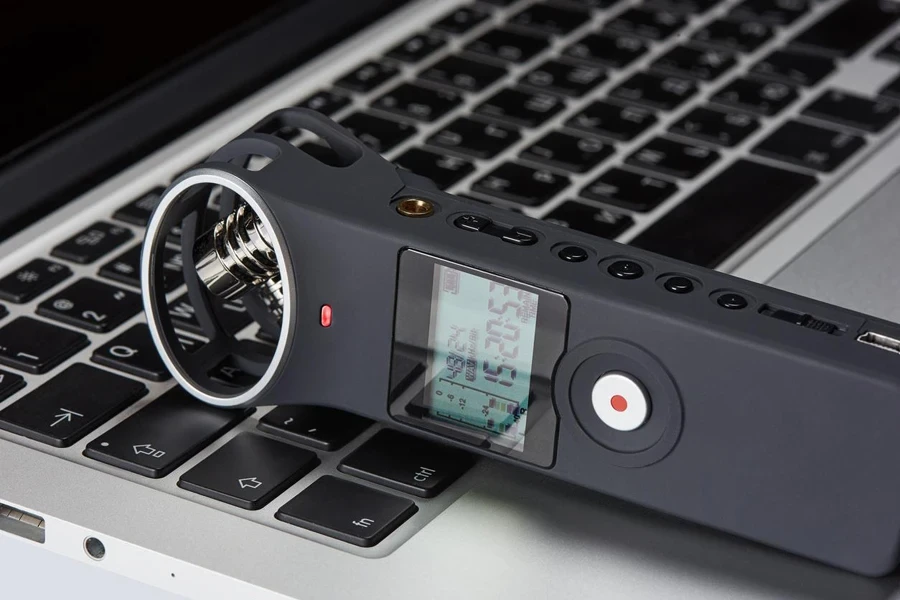
Analyzing top contenders: The digital voice recorder market in 2024 showcases a variety of standout models that cater to the rigorous demands of professional environments. Leading the pack are brands like Olympus, Sony, and Philips, each bringing forward devices that emphasize a blend of high-quality audio capture, long battery life, and robust features.
For instance, Olympus continues to impress with its LS-P4 model, which features a three-microphone system for clear recording with a natural stereo sound, suitable for everything from music recordings to board meetings. The device also supports FLAC recording, which ensures high-resolution sound without the loss of quality typically associated with compression.
Sony’s ICD-TX650 offers a slim, pen-sized form factor that does not compromise on functionality. It boasts a high-sensitivity microphone, 16GB of internal memory, and a quick charge feature that provides one hour of recording time with just a three-minute charge, making it ideal for professionals who need to rapidly capture high-quality audio on the go.
Philips’ DVT8010 VoiceTracer rounds out the top contenders with its innovative 360-degree recording capability, designed specifically for capturing large meeting environments. The inclusion of a motion sensor adjusts the microphone sensitivity based on the scenario, enhancing the clarity and quality of recordings.
Feature face-off:
1. Audio Quality and Recording Capabilities
- Olympus LS-P4: This recorder is highly acclaimed for its exceptional audio quality, featuring a TRESMIC system that includes three microphones to capture lower bass ranges alongside clearer, higher frequencies. It supports Linear PCM (Pulse Code Modulation) recording which delivers studio-quality uncompressed audio that’s ideal for musicians and sound engineers.
- Sony ICD-TX650: Known for its slim, pen-like design, the TX650 doesn’t compromise on sound quality. It features a high-sensitivity S-Microphone System, optimized for synergetic noise reduction and high-quality stereo recording, making it perfect for business professionals who require clear recordings in a variety of settings.
- Philips DVT8010: This model excels in environments that require recording multiple sound sources such as large meetings and conferences. It comes with a 360-degree microphone that adjusts the audio capture dynamically, ensuring balanced recording no matter the setting.
2. Usability and Design
- Olympus LS-P4: It offers a robust build designed to withstand rigorous use. The intuitive interface allows easy navigation through settings, and its compact size ensures it is discreet and portable for field recordings.
- Sony ICD-TX650: Its sleek, ultra-portable design stands out for professionals who need a recorder that can easily fit into a pocket or a small bag. Despite its size, it has a large storage capacity of 16GB, which is sufficient for lengthy recordings.
- Philips DVT8010: Comes with a boundary microphone that sits on a table to capture voices from around the room. Its design is optimized for stationary use, making it less portable but excellent for recording in fixed settings.
3. Additional Features and Connectivity
- Olympus LS-P4: Apart from high-quality audio recording, the LS-P4 features Bluetooth connectivity for wireless headphone connection and an easy mobile app interface for remote control, making it highly versatile.
- Sony ICD-TX650: Offers quick charge capabilities, providing 1 hour of recording time with just 3 minutes of charging – a valuable feature for professionals on the go.
- Philips DVT8010: Includes Wi-Fi connectivity for instant file sharing across devices and cloud services, which is invaluable for teams needing immediate access to the recordings.
4. Targeted User Environment
- Olympus LS-P4 is best suited for professionals who require high-fidelity recordings such as musicians, podcasters, and sound designers.
- Sony ICD-TX650 is tailored for business professionals and journalists who need a dependable device for clear recording in diverse environments.
- Philips DVT8010 is ideal for corporate settings where meetings and discussions are frequently recorded for documentation and compliance.
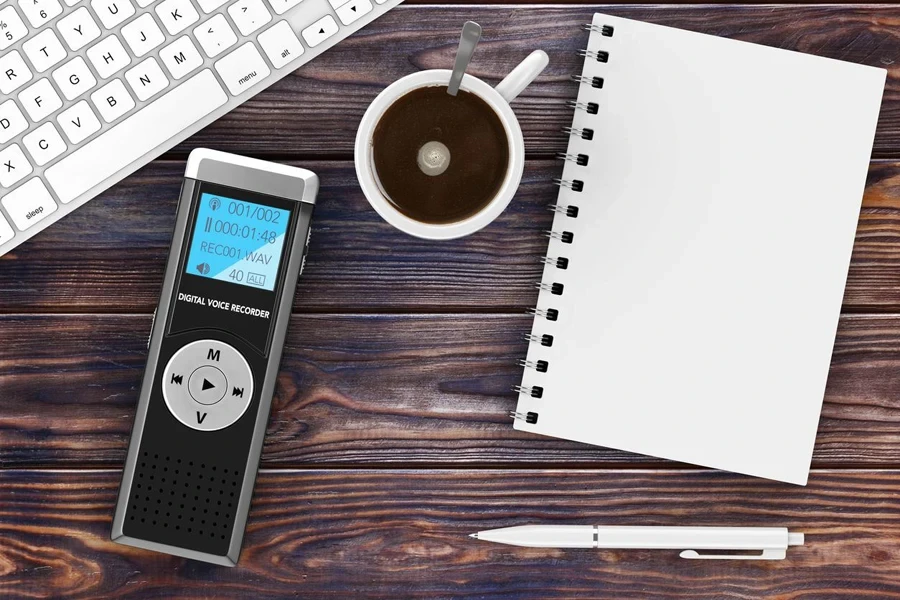
Conclusion
Selecting the right digital voice recorder requires understanding both the specific needs of one’s professional environment and the technological advancements of the devices available. The highlighted models—Olympus LS-P4, Sony ICD-TX650, and Philips DVT8010—offer a range of features that cater to diverse recording needs, from high-fidelity audio capture to enhanced portability and connectivity. By carefully considering these features against their intended use, professionals can effectively choose a recorder that not only meets but enhances their operational efficiency in a rapidly evolving technological landscape.
